Steak orders can reveal a lot about a person’s culinary tastes and preferences. While some orders can make chefs shake their heads in disbelief, others earn nods of approval and respect. In this exploration, we delve into the intriguing world of steak orders that evoke strong reactions from chefs. From the puzzling to the praiseworthy, discover what makes certain steak choices memorable for all the right or wrong reasons.
Well-Done Filet Mignon
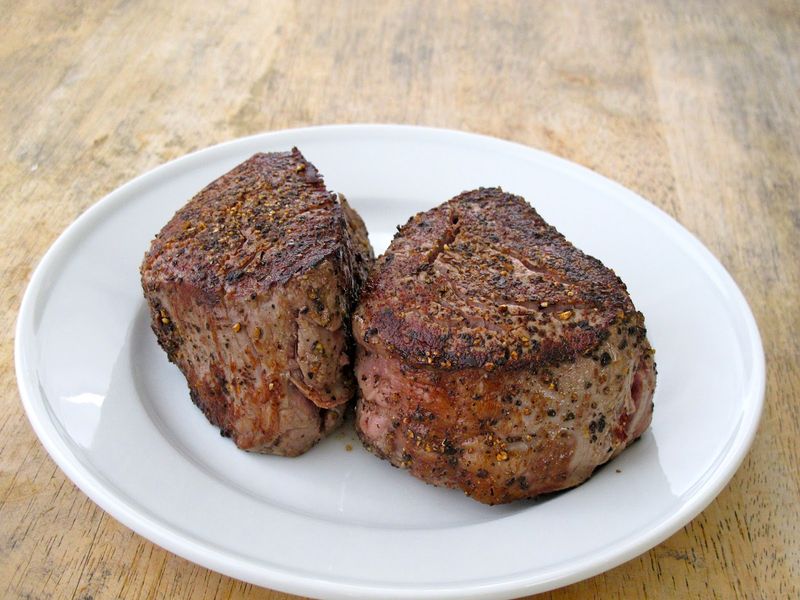
Nothing makes a chef cringe more than a well-done filet mignon. Known for its tenderness, cooking this steak to well-done loses its buttery texture. Imagine transforming a soft pillow into a stone; that’s the culinary equivalent. The dish becomes a chewy challenge, robbing the meat of its natural juices. Chefs see this as a waste of premium cut potential. However, people who order this tend to prioritize safety over flavor. The request is respected only for its personal preference but not for culinary enjoyment. Did you know? Filet mignon is French for “cute filet.”
Rare Ribeye

A rare ribeye makes chefs beam with pride. Prized for its marbling, a rare cook showcases its rich, beefy flavor. The steak remains juicy and tender, allowing the fat to melt seamlessly into the meat. Ordering it rare is a sign of trust in the chef’s skill, as it highlights the quality of the cut. Diners who enjoy this understand the art of steak cooking. Chefs respect the adventurous palate of those who prefer their meat on the rarer side. Fun fact: Ribeye is known as “scotch fillet” in Australia.
Medium-Well T-Bone
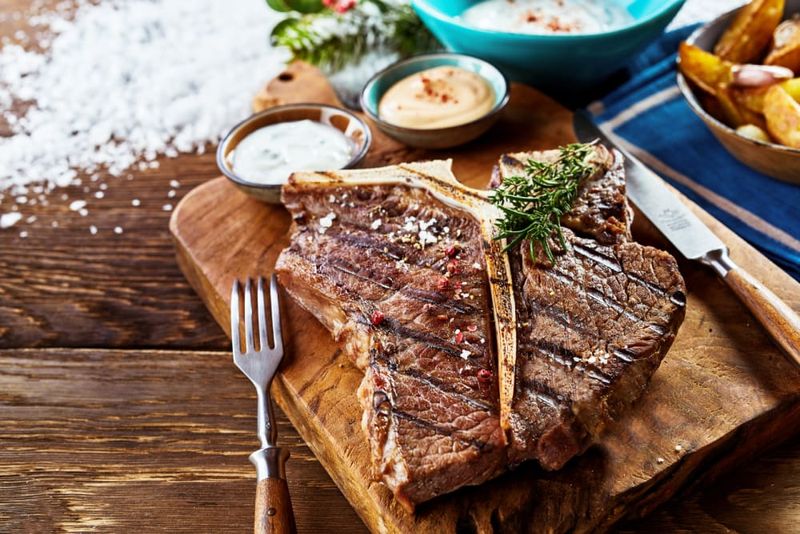
The medium-well T-bone sits in the middle of the road, neither offensive nor inspiring. This choice leaves chefs feeling indifferent. While the T-bone offers a flavorful experience due to its two cuts, cooking it medium-well risks drying it out. Enthusiasts of this style seek a balance between doneness and juiciness. However, for purists, it doesn’t quite hit the mark. This option might suit those transitioning from well-done to more adventurous choices. Interesting tidbit: The T-bone steak gets its name from the T-shaped bone that separates the fillet from the sirloin.
Blue Rare Sirloin
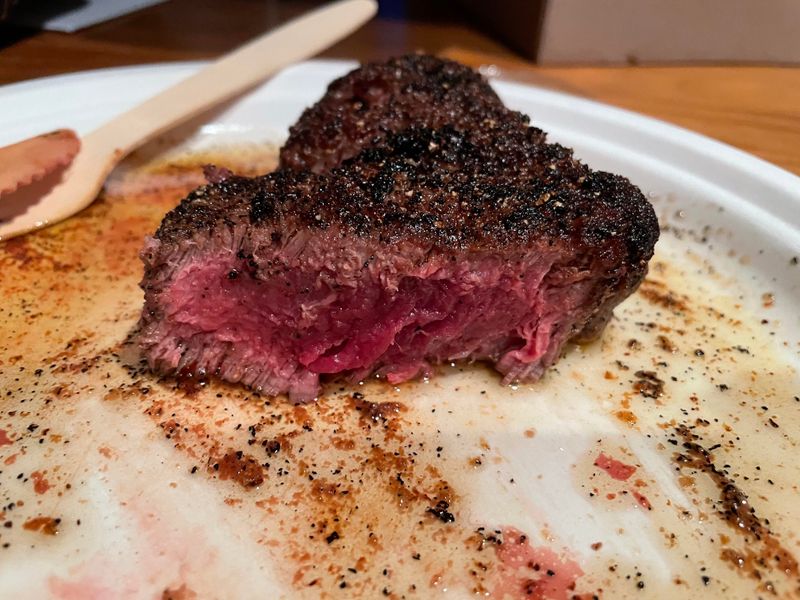
Blue rare sirloin is a daring choice that earns chef admiration. Seared on the outside and cool on the inside, it boasts bold flavors and tender textures. This order reflects confidence and respect for meat quality. Diners opting for blue rare appreciate the steak’s natural state, savoring its purity. Chefs celebrate such adventurous eaters, as this request highlights the art of minimal cooking. Did you know? The term “blue rare” comes from the blueish hue of the meat when it’s very rare. It’s a culinary term that stands for near rawness.
Steak Tartare

Steak tartare is a dish that earns nods of respect from chefs. Made from finely minced raw beef, it’s seasoned with spices and often topped with a raw egg yolk. This order shows a deep appreciation for meat quality and a love for bold flavors. Diners who choose tartare trust the chef’s expertise and the restaurant’s ingredient integrity. It’s a sophisticated dish that highlights culinary tradition. A fun fact: Steak tartare is named after the Tartars, an ethnic group known for eating raw meat. This dish connects history with culinary creativity.
Medium New York Strip
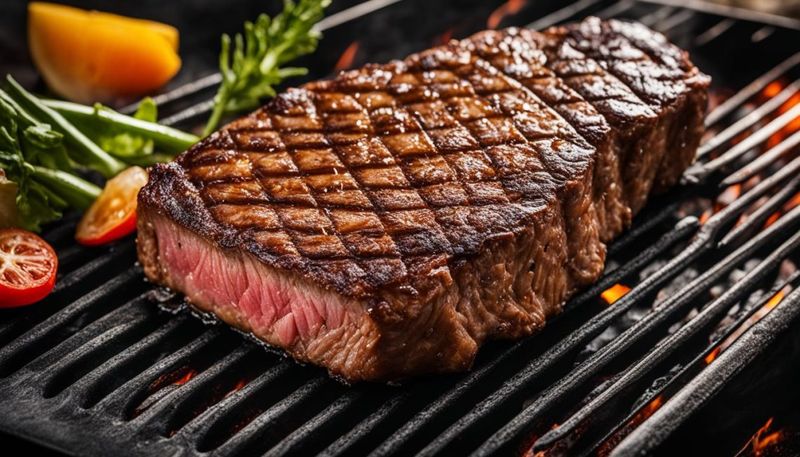
A medium New York Strip strikes a balance that often earns chef approval. Known for its robust flavor, this cut is best enjoyed when cooked to medium. It allows the marbling to melt and flavors to fully develop. Diners who order medium appreciate the sweet spot between tenderness and flavor. Chefs respect this choice as it showcases the steak’s natural qualities. This order indicates a knowledge of steak preparation and a palate that enjoys a balanced bite. Did you know? The New York Strip is named after the famous Delmonico’s Restaurant in New York City.
Overcooked Wagyu
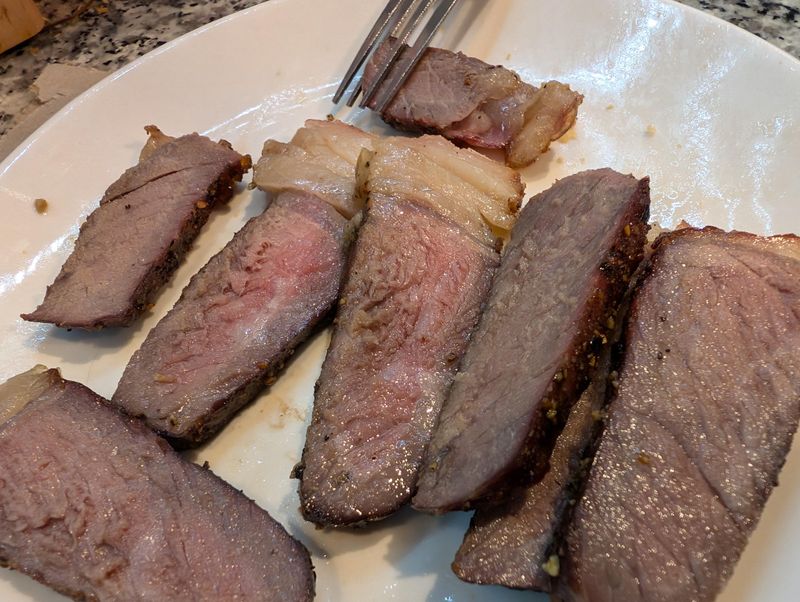
Imagine a luxurious Wagyu steak, renowned for its marbling, cooked to oblivion. Its once-tender texture has vanished, replaced by a chewy consistency.
Chefs wince at this mistreatment of a delicacy that should be savored. Its rich flavors, intended to melt in your mouth, are lost in the overcooking process.
Wagyu deserves gentle handling to preserve its essence. Overcooking not only disrespects the meat but also the craftsmanship behind it. Chefs respect Wagyu for its quality, but they cringe when it’s overdone.
Frozen Steak Thaw
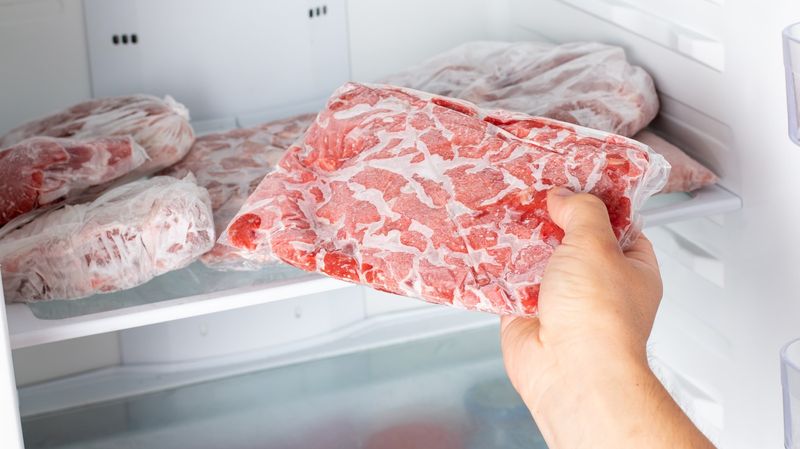
Thawing a steak correctly is crucial. Picture a steak pulled from the freezer, thawed hastily under hot water.
This practice leaves it unevenly cooked and lacking the tenderness it deserves. Chefs frown upon such shortcuts. Proper thawing preserves the steak’s integrity and flavor.
For chefs, respecting the thawing process is an unspoken rule. The art of steak preparation begins long before it hits the pan, and improper thawing is a culinary misstep they can’t ignore.
Butter-Basted Ribeye
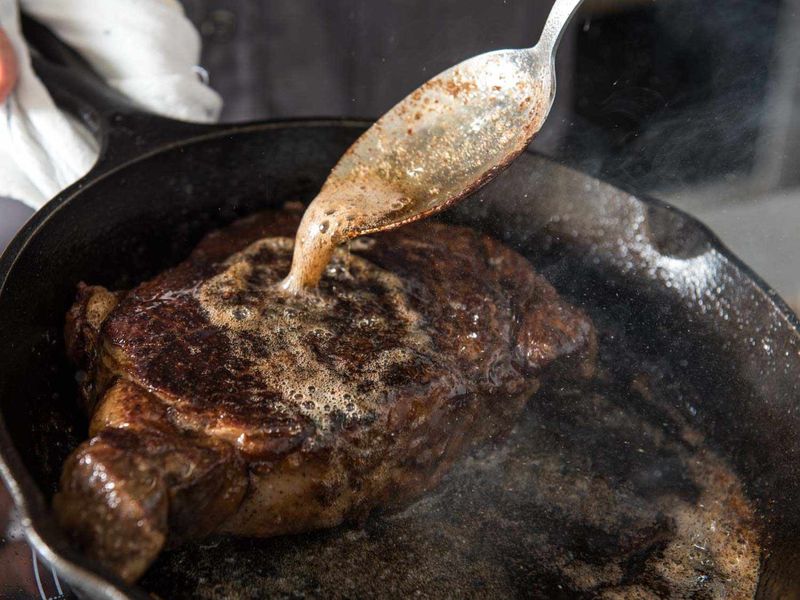
The sound of a ribeye sizzling as it’s basted with butter, rosemary, and garlic is music to a chef’s ears.
This technique enhances the steak’s natural flavors, adding richness and depth. Chefs appreciate the skill involved in creating a perfectly basted ribeye.
Butter-basting is a mark of respect for the steak, showcasing an understanding of flavor enhancement without overpowering the meat. It’s a method that earns nods of approval from culinary professionals.
Undersalted Porterhouse
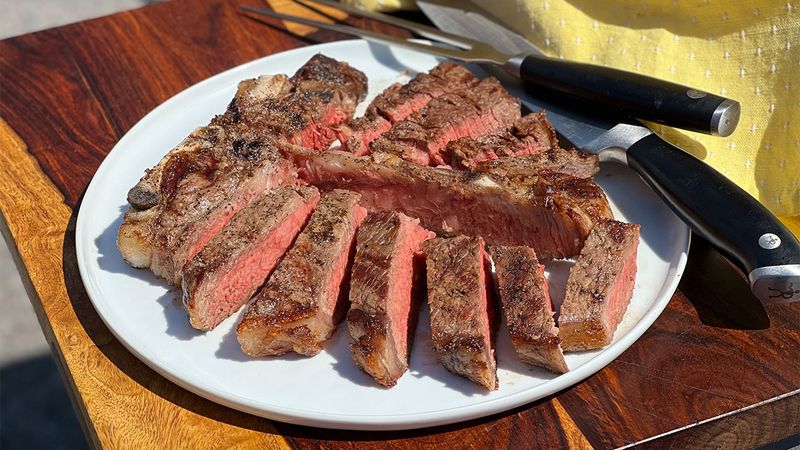
Seasoning is an art, and an undersalted porterhouse is its missed opportunity. Imagine a beautiful cut of meat, visually appealing but lacking in taste.
Chefs know that salt enhances flavor, bringing out the steak’s natural beefy goodness. Without it, the porterhouse falls flat.
A well-seasoned steak is a testament to a chef’s attention to detail. Skipping this crucial step is a misstep that diminishes the dining experience, leaving chefs shaking their heads.
Steak Diane
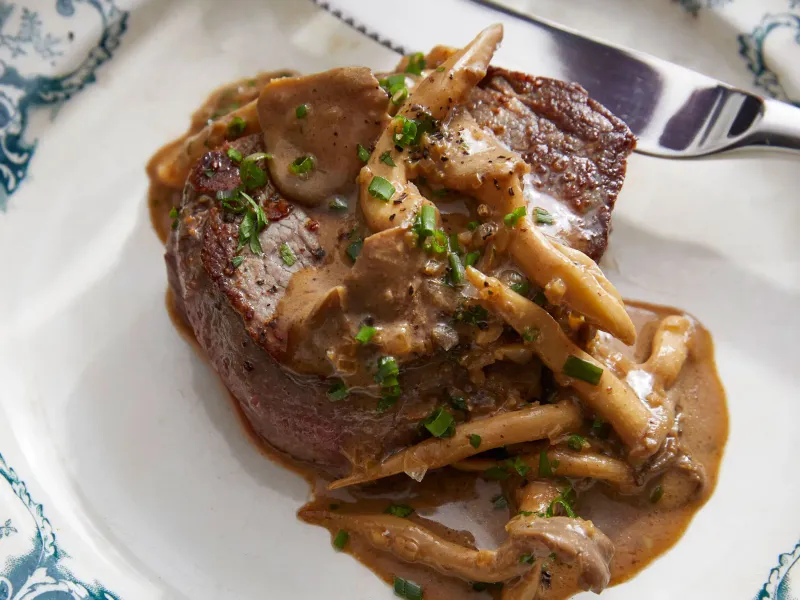
Steak Diane, with its cognac flambé and creamy sauce, is a dish of sophistication.
Chefs appreciate the theater and skill involved in its preparation. The flambé not only adds flavor but also a touch of elegance.
It’s a classic that commands respect for its intricate process and the balance of flavors. Culinary professionals see Steak Diane as a nod to traditional cooking methods, where technique meets taste in perfect harmony.
Marinated Flank Steak
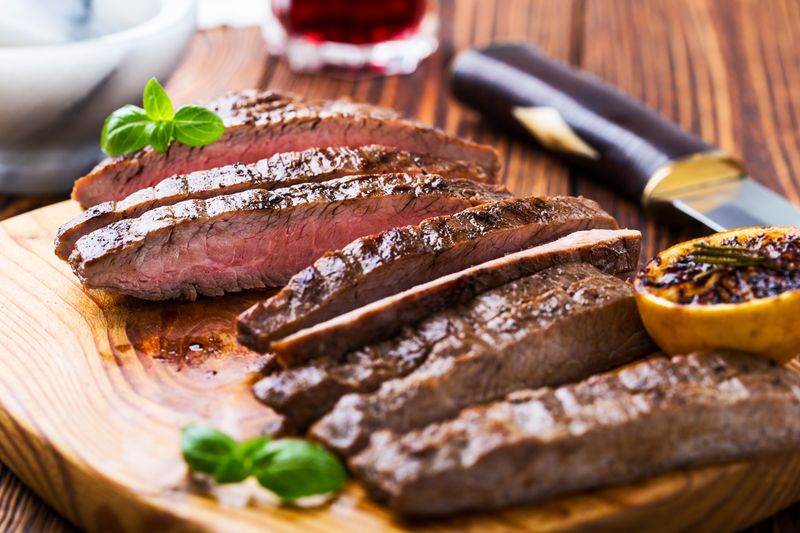
Marinating a flank steak transforms it into a flavorful delight. Picture it soaking in a blend of soy sauce, garlic, and herbs.
Chefs respect this method for its ability to infuse taste throughout the meat, tenderizing while adding complexity. The result is a steak that’s rich in flavor from surface to center.
Proper marination shows a commitment to enhancing the steak’s potential, earning the chef’s approval with every savory bite.
Pre-Sliced Striploin

Slicing a striploin before serving can be a grave error. Imagine a steak’s juices spilling out, leaving it dry and less enjoyable.
Chefs prefer to preserve the steak’s succulence by slicing just before serving. This ensures that each bite remains juicy and flavorful.
Respecting the steak’s natural juices is key to a memorable dining experience, and pre-slicing is a mistake that makes chefs cringe.
Grass-Fed Perfection

Grass-fed steaks, with their lean texture and unique flavor, require precise cooking techniques.
Chefs appreciate the challenge and reward of preparing this type of beef. Its distinct taste sets it apart, and when cooked correctly, it’s a chef’s delight.
Emphasizing the natural flavors without overpowering them is a skill that earns respect. Grass-fed perfection is a testament to a chef’s prowess and understanding of quality ingredients.
Overly Peppercorned Au Poivre
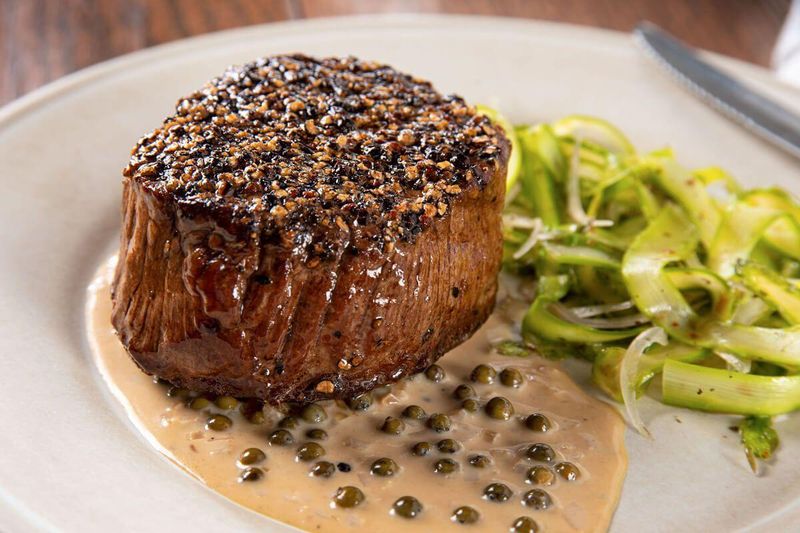
Steak au poivre should balance flavor with texture, but an overload of peppercorns can be disastrous.
Chefs cringe at the sight of a steak drowned in pepper, masking its natural taste. The dish should celebrate the marriage of spice and beef, not overwhelm it.
Proper seasoning is crucial, ensuring the pepper complements rather than dominates. Chefs respect a well-executed au poivre for its finesse and flavor harmony.
Sous Vide Mastery
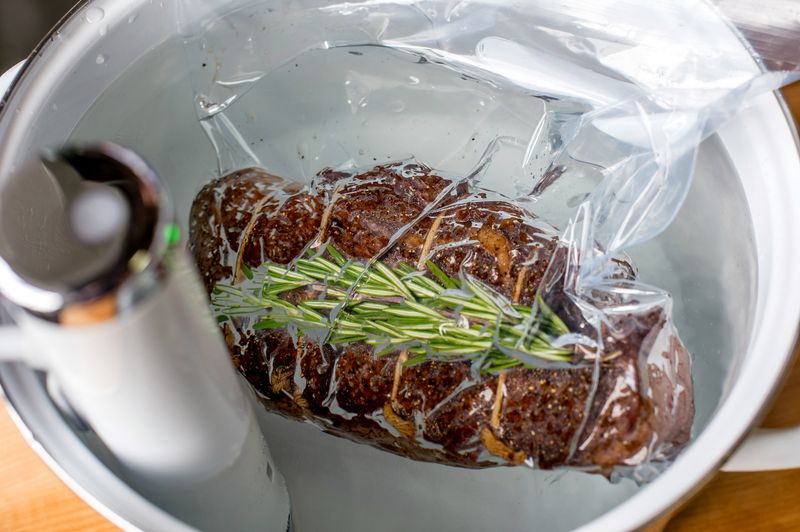
Sous vide cooking offers precision unmatched by traditional methods. A steak cooked this way retains its juices and tenderness perfectly.
Chefs value this technique for its consistency and control over doneness. The result is a steak that’s evenly cooked from edge to edge.
Sous vide mastery requires understanding time and temperature, showcasing a chef’s expertise. It’s a method that earns admiration for its ability to deliver perfection without compromise.
Mushroom-Crusted Tenderloin
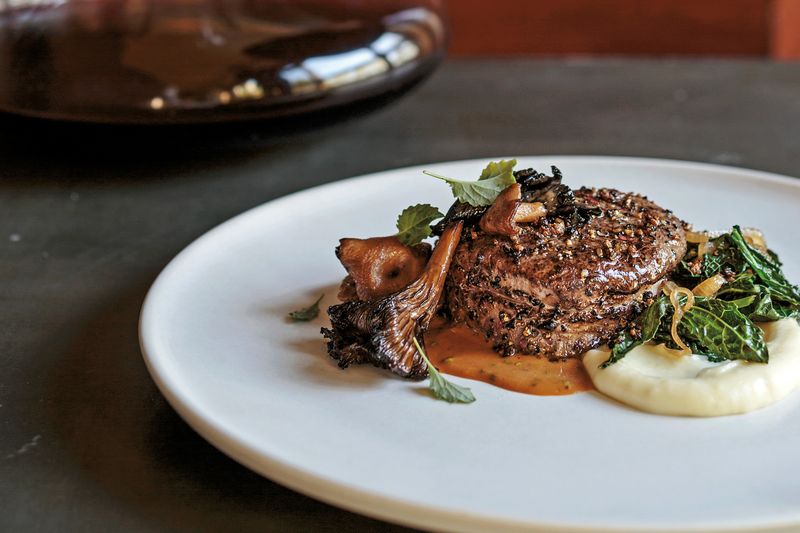
A mushroom-crusted tenderloin is a symphony of flavors. Picture a tender steak enveloped in a savory crust that adds both texture and umami.
Chefs appreciate this creative approach, elevating the steak without overshadowing it. The mushroom crust enhances the experience, offering a unique taste profile.
It’s a dish that demonstrates a chef’s ability to innovate while respecting the steak’s inherent qualities. Culinary professionals nod in approval at such artistry.
Poorly Rested Steak
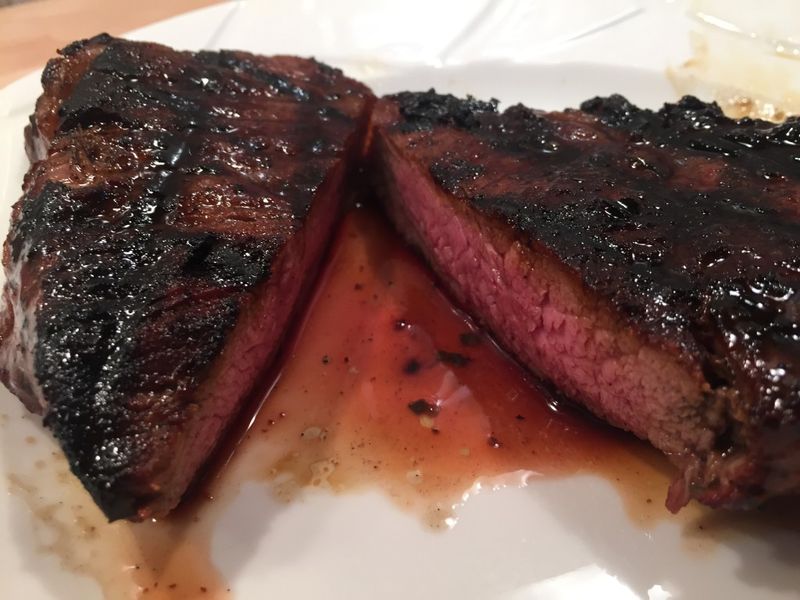
Resting a steak is crucial to preserving its flavor and juices. Imagine a steak cut open too soon, its juices flowing away.
Chefs view this as a fundamental misstep. A well-rested steak retains its moisture, offering a more satisfying bite.
Patience is key, allowing the steak to settle before serving. The loss of flavor and texture from improper resting is an error that experienced chefs avoid at all costs.
Pan-Seared Perfection
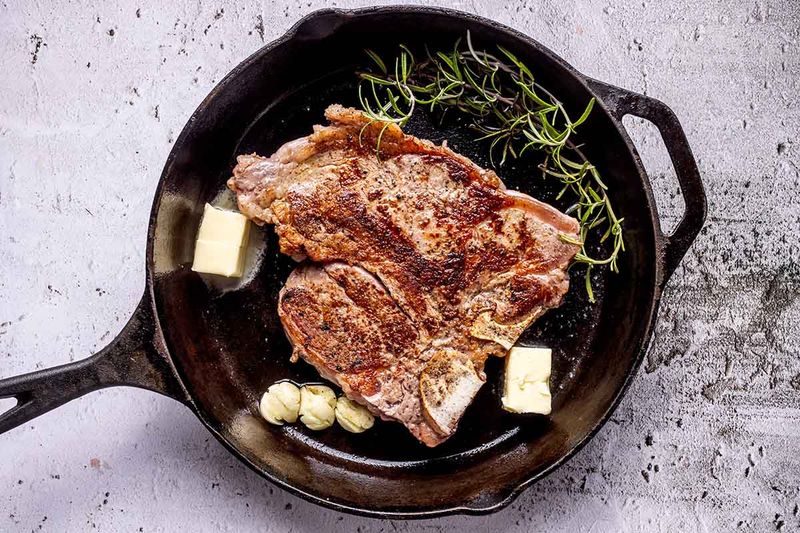
Pan-searing a steak to achieve a rich, caramelized crust is an art form. Chefs admire the technique for its ability to lock in flavor while adding texture.
The sizzling sound of a steak hitting a hot pan is like a symphony in the kitchen, heralding a delicious outcome.
Mastering the pan-sear requires precision and an understanding of heat, resulting in a steak that’s both visually appealing and delectable. It’s a skill that culinary experts hold in high regard.
Garlic Overload
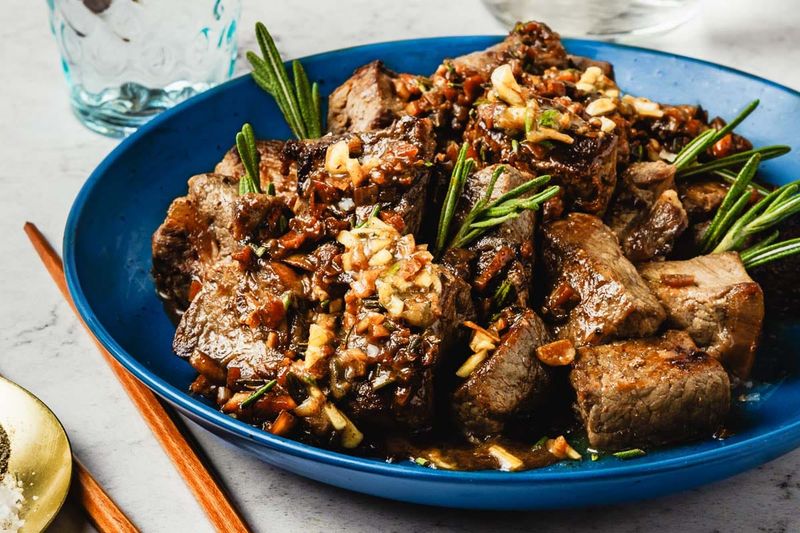
Garlic can elevate a steak’s flavor, but excess can be overpowering. Picture a steak smothered in garlic, its natural taste eclipsed.
Chefs strive for balance, using garlic to enhance rather than dominate. Proper seasoning ensures that the steak’s flavor shines through.
Chefs cringe at the misuse of garlic, as it can turn a potentially great dish into an overwhelming experience. Respecting the ingredient’s power is essential in achieving culinary harmony.
Reverse Sear Technique

The reverse sear technique offers a uniformly cooked steak with a beautifully seared crust.
Chefs favor this method for the control it provides over the cooking process. It allows for a tender, pink interior with a deliciously crisp exterior.
Mastering the reverse sear showcases a chef’s understanding of temperature and timing. It’s a technique that earns respect for its ability to deliver consistent and delicious results.
Overly Spiced Cajun Steak
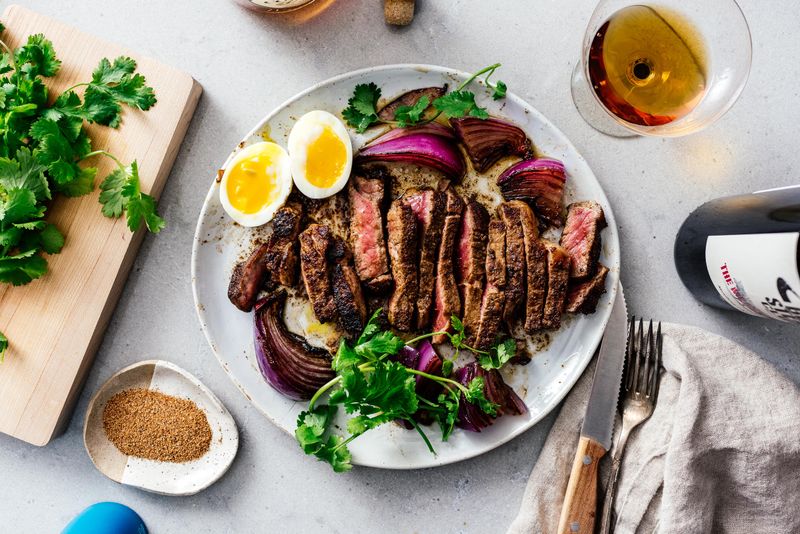
Cajun spices can add excitement to a steak, but too much can be overwhelming. Imagine a steak buried under a mountain of seasoning, its natural flavor lost.
Chefs aim for a harmonious blend, where spice enhances rather than overshadows. The balance of flavor is key to a successful Cajun steak.
Over-spicing is a common pitfall that turns an exciting dish into a spicy disaster. Chefs understand that restraint is essential for achieving a well-rounded flavor profile.
Perfectly Aged Steak
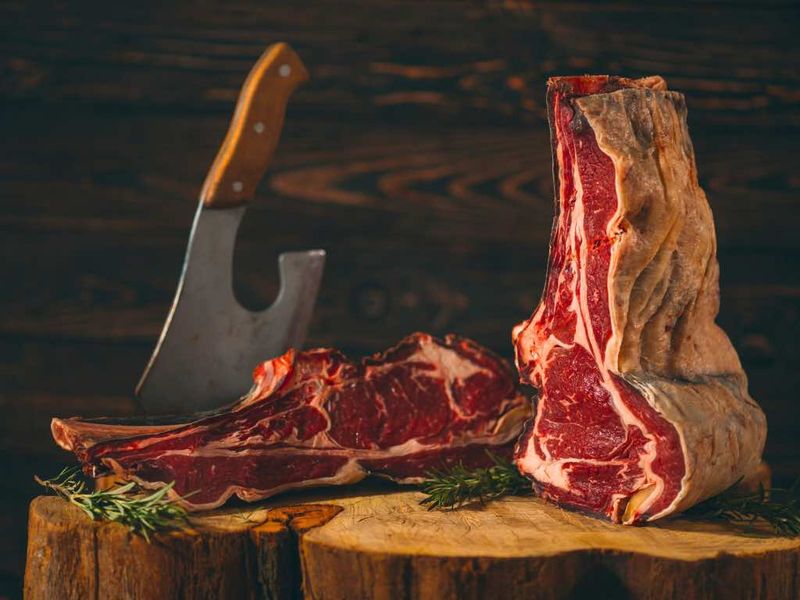
Aged steaks are celebrated for their depth of flavor and tenderness. Chefs appreciate the transformation that occurs during the aging process.
The rich, deep color and enhanced marbling speak to its quality. Cooking an aged steak is a privilege, allowing the complex flavors to shine.
Culinary professionals admire the patience and skill involved in aging, recognizing it as a true art form. An aged steak is a testament to craftsmanship and quality.
Charcoal Grilled Brisket
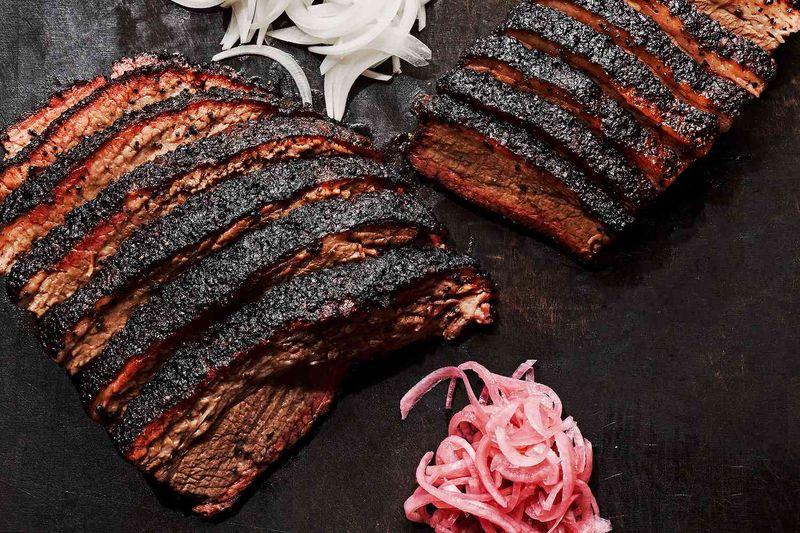
Imagine the robust aroma of a charcoal grill. Chefs grumble when brisket is ordered medium-well. The succulent fat needs slow cooking to achieve tenderness. Inside, it should be juicy and flavorful.
Grilling brisket over charcoal infuses a smoky depth unmatched by other methods. However, some diners request brisket with a firm texture and lose out on its potential richness.
For a sublime experience, leave it to the chef’s expertise. Trusting their skill can elevate the humble brisket into a memorable feast.
Did you know? Brisket was a staple for early Texan settlers, cooked over open flames.
Sizzling Skillet Fajitas

The dramatic sizzle of fajitas captivates diners, but overcooking can make chefs wince. Perfectly cooked fajitas should be tender and juicy, bursting with flavor.
Some diners demand meat cooked until dry, missing this vibrant dish’s essence. When done correctly, fajitas are a symphony of textures and aromas.
The chef’s skill in timing and temperature is crucial to retain the meat’s natural juices and enhance its spice profile. Fun fact: Fajitas originated in Texas, becoming a popular Tex-Mex staple.
Coffee-Rubbed Rump Roast
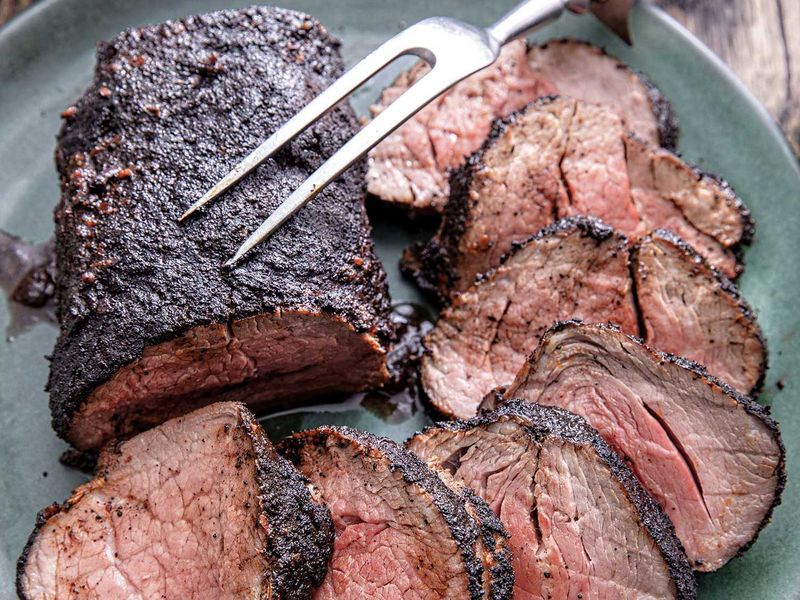
Coffee and steak might seem an odd pair, but the bitterness complements the meat’s flavors beautifully. A coffee-rubbed rump roast needs precise cooking to retain its juiciness.
Some request it well-done, stripping away the roast’s complex character. The perfect roast should have a crusty exterior with a tender pink center.
This method creates an irresistible aroma and taste. Coffee rubs became popular in the 1980s, adding a gourmet twist to traditional roasts.
Balsamic-Glazed Flat Iron
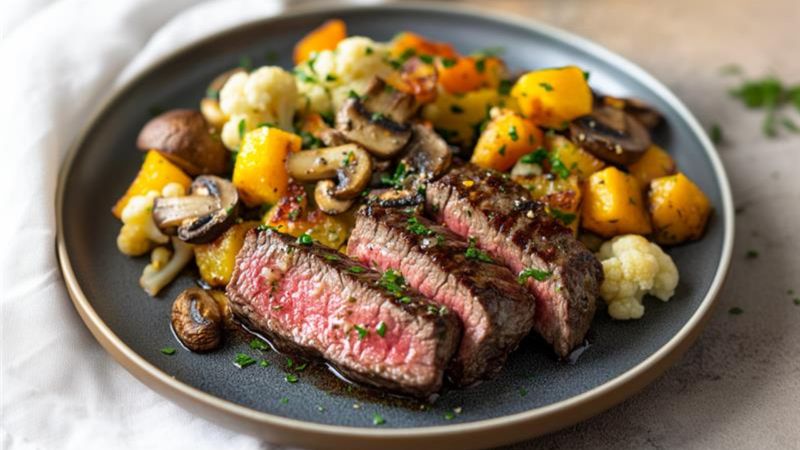
Balsamic glaze adds tangy sweetness to flat iron steak, but too much can overpower the meat. Chefs strive for balance, ensuring the glaze enhances rather than masks flavors.
Ordering this steak medium allows the natural beef flavor to shine. Some diners prefer heavy glaze, but moderation is key.
Flat iron is a relatively new cut, prized for its marbling and tenderness. It became popular in culinary circles in the early 2000s.
The perfect combination of glaze and beef creates a memorable dish.
Pepper-Crusted Hanger Steak

The hanger steak is an unsung hero in the steak world. Its robust flavor is highlighted by a coarse pepper crust, but too much pepper can be overpowering.
When cooked to medium-rare, it should be juicy with just the right spice kick. Chefs sigh at requests for well-done hanger steak, which sacrifices its tender quality.
Hanger steak was once known as “butcher’s steak,” as butchers often kept it for themselves due to its flavor. It’s a hidden gem worth savoring.
Leave a comment